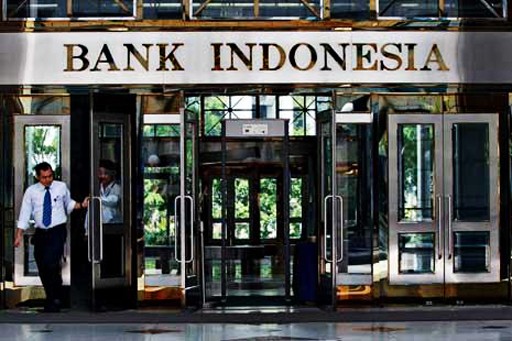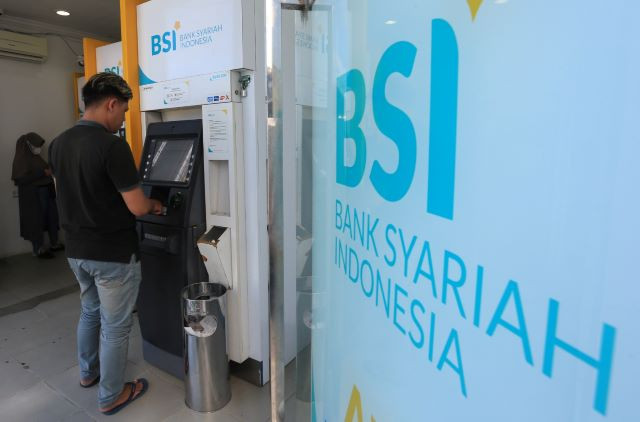New policy rate tests BI's independence
Starting in the middle of August, the benchmark interest rate instrument will no longer be the BI rate; instead fiscal policy will be based on the seven-day reverse repo rate.
Change Size
 The inflation rate targets set by BI during the last 11 years were rarely achieved. (Kompas.com/-)
The inflation rate targets set by BI during the last 11 years were rarely achieved. (Kompas.com/-)
T
wo major events in the Indonesian economy occurred consecutively in April. First, the government successfully completed the 2016 revised state budget. Without considering the impact of the upcoming tax amnesty, state revenue will decline significantly due to the economic slowdown and persistently low commodity prices.
Consequently, spending cuts are inevitable. The high demand for infrastructure spending led to a shift of expenditure items. Unfortunately, stricter efficiency in most expenditure items can no longer substantially reduce the budget deficit. It is estimated that the deficit ratio will widen from 2.1 to 2.5 percent of GDP. So, there will be an additional need for debt of about Rp 40 trillion, of which Rp 21 trillion will be new debt.
The second event was the announcement by Bank Indonesia ( BI ) of a change in its monetary policy instruments. Starting in the middle of August, the benchmark interest rate instrument will no longer be the BI rate; instead fiscal policy will be based on the seven-day reverse repo rate.
Changing from the BI rate to the reverse repo rate implicitly shows the ineffectiveness of the BI rate in controlling the national economy. On the monetary front, for example, the inflation rate targets set by BI during the last 11 years were rarely achieved.
Regarding rupiah stabilization, BI does not explicitly incorporate the exchange rate target into the BI rate formulation. Consequently, economic actors ( including the central bank itself ) did not have a guide as to a foreign exchange rate that could be used to make an economic decision.
In relation to banking, the timing of the announcement of the new rate policy was inappropriate as the process toward the single-digit interest rates has not been completed yet. The three BI rate cuts so far have not been proportionately followed by a decrease in banking interest rates, implying a liquidity crunch.
By definition, the reverse repo rate is the interest rate on the sale of government debt securities by BI to banks under the condition of being able to be bought back again by BI within a certain period. In this case, the interest rate on the government debt securities market becomes an “anchor” rather than the inflation rate as in the BI rate determination.
Controlling the dynamics of the money market in terms of liquidity facilitates BI to direct the movement of other financial instruments, such as deposit and loan interest rates. Thus, the policy rate supports the transmission mechanism of monetary policy to the real sector.
The reverse repo rate refers to the government debt securities with seven-day tenors compared with the one-year BI rate. Thus, the reverse repo rate is more flexible in accommodating the dynamics of the money market in the shorter term. As a result, increasing the depth of the financial markets is the goal of the change in policy rate.
It is clear so far that the intersection between the two major events above is the government debt securities. The government relies on government debt securities ( bonds ) to fulfill the budget deficit. The front-loading strategy in early 2016 in fact left the bonds oversubscribed. As a result, the offered interest rate has to be high in order to attract investors to purchase them.
However, this raises a dilemma for the government. On the one hand, the high interest rates encourage the lenders to hold government debt securities that subsequently can be used to implement the state budget. On the other hand, the high interest rates on government debt securities result in an excessive burden in the future.
As a comparison, over the last year the government allocated Rp 183 trillion to cover interest costs. With narrow fiscal space, the interest payments were paid from new debt flows. This stimulates a higher risk of default. The greater the risk the higher interest rates to obtain new debt.
Anticipating the interest burden in the future, the government has often asked banks to lower interest rates. In the consultancy meeting between the government and BI board of governors in March, the chief economics minister again expressed the government’s hope of lower interest rates.
For BI, taking government debt securities transactions as a basis for determining the reverse repo rate potentially erodes its independence. Law No. 23/1999, which was renewed several times until Law No. 6/2009, concerning the independence of the central bank mandates that BI must be free from any intervention in formulating monetary policy.
The single target mandated by the law is rupiah stability. This objective incorporates two key aspects: the first is a stable rupiah for goods and services, as reflected by the inflation rate. The second is exchange rate stability against other foreign currencies, which is reflected by depreciation/appreciation.
The reverse repo rate refers solely to the dynamics of the financial markets instead of the inflation rate and exchange rate fluctuations. Without a robust mechanism to take into account the two main indicators, the reverse repo rate will move away from the stabilization of the rupiah as stipulated by the law.
As a result, the transition from the BI rate to reverse repo rate in the next three months is a critical period. The suspicion of a subordinate relationship between the Finance Ministry and the central bank will emerge. The fiscal authority drives the financial sector to provide cheap funds to the state.
In such a case, the fiscal targets are the prominent factor leading the change in monetary policy. If we have this, both the credibility of monetary policy and the independence of the central bank are questioned.
In fact, both are widely mentioned as one of the most fundamental aspects in the implementation of macro-economic policy.
***
The writer is a at the school of economics at the State University of Jakarta.
---------------
We are looking for information, opinions, and in-depth analysis from experts or scholars in a variety of fields. We choose articles based on facts or opinions about general news, as well as quality analysis and commentary about Indonesia or international events. Send your piece to community@jakpost.com.









